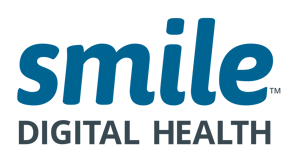Meet the upcoming Payer-to-Payer Rules the smart way.
The countdown is on to meet the final deadlines for payer to payer data exchange in the Interoperability and Patient Access final rule (CMS-9115-F). As you work to meet the first rule by January 2022, be sure to look ahead to the January 2023 proposed as well. (Not sure what’s different between the two rules? Check out our previous article here.) Otherwise, your dev team could be in for a few nasty surprises as they rip out their first implementation and replace it with an all-new one.
Because we're in the business of reducing barriers and making it easier to collect and exchange data, here are the most essential tips from our experts that will make your devs a bit, well, HAPI’er as you meet the upcoming mandates.
Be strategic, not tactical.
Avoid a shortsighted, tactical approach. Instead, be strategic and use a hybrid approach that meets both rules simultaneously.
Remember, the Final Rule (but not actually final) mandates that payers make it possible for patients to request their data from one plan and bring it to another plan. While Centers for Medicare & Medicaid Services (CMS) recommends using a FHIR-based API, it does not mandate it. That means the clinical data can be sent in any format. Furthermore, claims and Explanation of Benefits (EOB) do not have to be included, even though that would be valuable information. And finally, data that is not in FHIR format is not required to be shown to members.
To fix the shortcomings of this rule, CMS released a second rule that will require data to be sent using a FHIR-based Payer-to-Payer API that conforms with Payer Data Exchange Implementation Guides. Additionally, claims and EOB must also be exchanged. This rule comes into effect in January 2023.
For some, it may be tempting to first meet the 2022 final rule by creating a FHIR “data façade,” which will allow payers to keep their data in a SQL database and present a real-time translation of the data to their members. This may feel like it saves some time initially by January 2022, but this tactical approach will need to be replaced when it's time to exchange more complex data using FHIR-based API.
Smile Digital Health's Hybrid Providers will allow you to bridge legacy APIs with FHIR Resources without creating an additional copy of your data.
Instead of building a temporary façade that will need to be replaced in a year, use a repository model that will keep your data safe while you enter the uncharted world of data exchange. A repository will allow payers to receive data from unknown sources--something payers haven't had to do before now--and mirror patient access. This way, incoming data can be kept separate, which leads us to our next point.
Don't mix up your data. Create and follow a sound Quality Assurance (QA) process.
Because exchanging data is new territory, most payers do not have a QA process that does accurate member matching or records the provenance of data.
When you create a repository using our Hybrid Providers, run a portion of the data through QA for member-matching before moving it in with the patient-access data. This is an essential step in avoiding HIPAA headaches, such as accidentally exposing a member's records to the wrong person. Use a FHIR-based Master Data Management (MDM) system to ensure member matching.
Using the FHIR Bulk Export, you can even attach your FHIR resource to non-FHIR data, such as an image of an MRI scan or an X-ray, so that it will be carried over and maintained. (FHIR Bulk Import is coming soon!) Remember, the goal of the Proposed Rule (aka FHIR-only rule) is to provide the most complete picture of each member possible, including claims and EOB.
Choose a strategic platform that is flexible and that you can architect to meet your integration needs.
Smile will help you maintain the integrity of your data by allowing you to create purpose-built repositories and purpose-built instances. Our FHIR Gateway makes it possible to operate in this multi-instance environment. Smile Digital Health's FHIR Gateway allows one query to be in the same instance or a different instance.
In order to exchange data, you will need to know the FHIR endpoint. The Council for Affordable Quality Healthcare (CAQH) has created a registry, which we support. Smile also allows you to create your own custom registry and endpoints, perform P2P audits, and support highly granular P2P consent directives.
Most importantly, Smile will integrate the way you want to integrate--whether that is on-prem or in the cloud, and fits in any environment, such as AWS, Azure, and others.
Remember, the Interoperability and Patient Access Rules are just the beginning of more complex and complete data exchange. You'll need to continue to automate and administer large volumes of sophisticated FHIR-based Data Exchanges. Meeting these mandated challenges will be key to every Payer's success and survival.
Set up a call with one of our experts to see for yourself how flexible and strategic the SMILE solution is.


